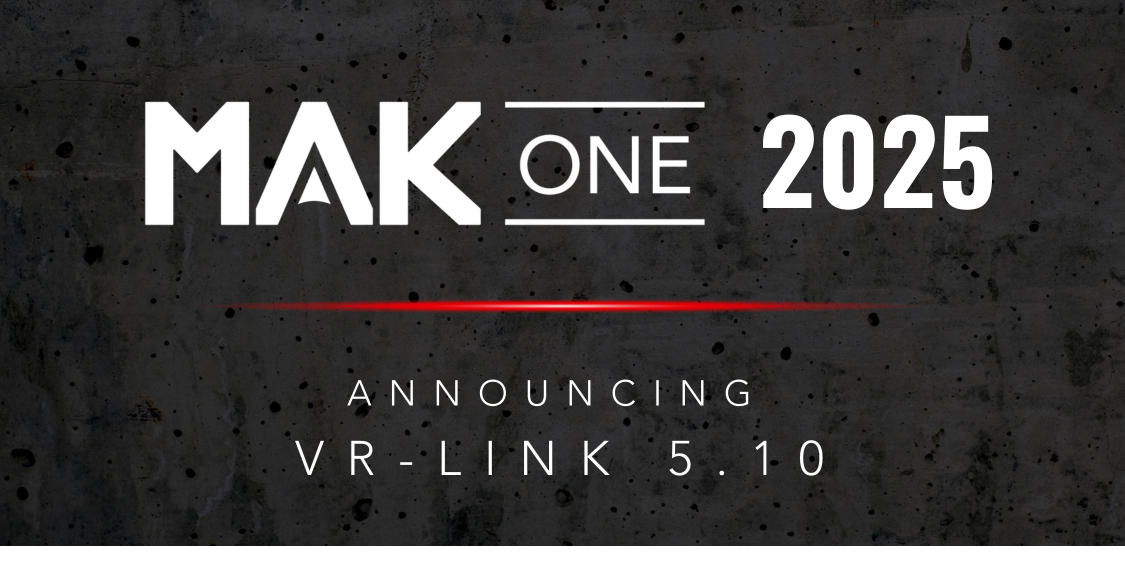
It's official: VR-Link 5.10 is here!
by Jim Kogler, VP of Products
VR-Link is one of MAK’s longest-standing products and it remains a cornerstone of our interoperability suite, providing robust, reliable networking across the full spectrum of simulation environments.
Keep reading to learn more about what’s included in this release. And stay tuned for more MAK ONE 2025 product release announcements from me over the next few weeks.
Highlights of VR-Link 5.10
- HLA 4 (IEEE 1516-2025) support
- Red Hat Enterprise Linux 9 compatibility
- Extended METOC FOM support, including a new Turbulence object class
- C++20 compatibility and updated libraries (Boost 1.84.0)
- New configuration file support for shared network setup across MAK ONE products
- Bonus MAK ONE HLA Spy for monitoring HLA traffic for MAK ONE-based federations
- Continuing MAK’s Standards Leadership
Standards define MAK. For years, we’ve worked closely with SISO and the HLA community to help shape the HLA 4 specification. Earlier this fall, we released the MAK RTI 5.0 with HLA 4 support; now VR-Link 5.10 extends that capability to the MAK ONE suite and your VR-Link-based applications.
Upgrading is simple. Just recompile your VR-Link-based application and it’s ready for HLA 4. VR-Link handles the complexity so that you can adopt the latest standards with minimal effort.
Modernized Code and Broader Platform Support
VR-Link 5.10 updated its API to support C++20 compliant compilers, removing deprecated features and improving compatibility with modern compilers. (Note: HLA Evolved still has older C++ language constructs as part of the HLA standard. These restrictions only apply when compiling with HLA Evolved libraries.) We’ve also added support for Red Hat Enterprise 9, keeping pace with the latest enterprise Linux platforms.
Simplified Configuration and New Tools
A new configuration file format now lets you define FOM modules and DtExerciseConn parameters in one place. This makes it easy to share consistent configurations across federates - reducing setup time and connection errors.
We’ve also added a bonus MAK ONE HLA Spy, a tool for monitoring HLA traffic for MAK ONE-based federations to the Bonus Downloads page. It monitors a subset of RPR FOM entities and interactions, as well as extensions from NETN and MAK FOM modules.
The MAK ONE Interoperability Suite
VR-Link 5.10 is a key part of a broader MAK ONE interoperability suite that includes MAK RTI 5.0, VR-Exchange, the MAK Data Logger, the MAK WebLVC server, and the newly released MAK FOM Editor.
Together, these tools demonstrate our ongoing commitment to open standards, interoperability, and open APIs for our customers ongoing programs and for support for those of the future. MAK’s investment in VR-Link ensures that it remains stable, compatible, and forward-looking so you can focus on simulation development, confident that MAK is leading the way in advancing and maintaining the standards that power your systems.
Questions or comments? Connect with the MAK team anytime at

